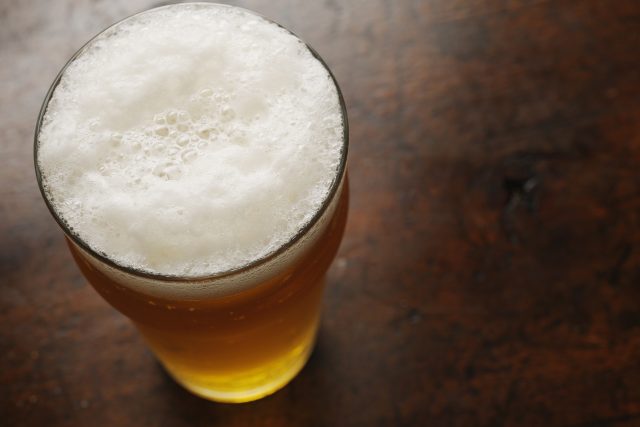Este sitio web utiliza cookies para que podamos ofrecerle la mejor experiencia de usuario posible. La información de las cookies se almacena en su navegador y realiza funciones como reconocerle cuando vuelve a nuestro sitio web y ayudar a nuestro equipo a comprender qué secciones del sitio web le resultan más interesantes y útiles.
Should the head on your beer be part of your pint’s volume?
The Campaign for Real Ale (CAMRA) is urging politicians to guarantee people a full measure on the 200th Anniversary of the British pint. But, db asks, is the pursuit of volume progression?

This week marks the 200th anniversary of the passing of the Weights & Measures Act 1824, an historical date since it defined a pint measure in both British and Irish law for the very first time.
CAMRA, which has around 150,000 members across the UK, is celebrating the occasion by calling on political parties to give their backing to a change in the law to guarantee drinkers a right to a full pint
The consumer group, known for its defence of cask ale in Britain, has reached out to politicians in a bid to change the law in the next Parliament to guarantee that the head on a pint or half pint of beer wouldn’t be included in the total volume.
According to the Chartered Institute of Trading Standards found that 86% of beer is short measured, and current laws leave consumers no recourse if they’re refused a top up. Despite this, scientists have long argued that the head of foam on the top of a pint of beer is necessary to its aroma and flavour as bubbles burst on the top allowing people a better drink.
Leading the lobbying, CAMRA national director Gillian Hough said: “The pint of beer or cider is part of our culture and heritage across these islands and it is right that we mark the 200th anniversary of the pint being defined in law in Britain and Ireland for the first time by raising a glass to our great local pubs, social clubs, breweries and cider producers.
“But with too many consumers receiving short measures at the bar, CAMRA wants the next UK government to introduce a legal right for pubgoers to receive a 100% liquid pint each and every time they are served. This would give drinkers a guarantee of getting what they pay for when they are supporting local pubs and breweries and would be a fitting way to mark the 200th anniversary of the great British and Irish pint.”
Volumen
Britain is one of the few countries where ‘volume’ of serve is considered paramount, with the pint measure having long been benchmarked as the nation’s way to assess affordability. This was highlighted a few years ago when a beer that was purported to cost four times the amout of a roast dinner received backlash for daring to be available in a pub. Last year, the price of a pint saw an 11% increase and uproar when there was talk of Wetherspoons selling pints of beer for around £7.
Such is the British penchant for quaffable pints, the nation’s reputation for volume drinking has been documented across the globe, with people from England recently being informed that they will be denied strong beer and will have to make do with low-alcohol beers at the first game of the Euro 2024 Championships after Gelsenkirchen police informed press that “it is just the England game which will have the low-strength beer. The other games at the stadium will have 4.8%”.
db pointed out, “we are conditioned to think of beer in pints and half pints because the Weights and Measures Act has historically skewed the perception of the British public as beer as simply a volume drink. This downgrades it entirely”.
Specific serving capacity
Speaking to the drinks business, beer sommelier Annabel Smith explained: “Legally, beer is required to be served in specified serving capacities and, unless measured, is therefore sold in stamped vessels which represent these capacities. Stamped glassware in the UK is either line-fill, where the presence of a physical line indicates the required liquid volume, or brim fill where the nominal capacity is denoted by the brim of the glass. When dispensing beer with a head into a brim measure glass, the head must reach the brim or above it to ensure that the quantity of beer (liquid and head) dispensed is at least a pint or half a pint.”
Smith highlighted how “through guidance developed by the British Beer and Pub Association (BBPA), based on case-law and agreed by the UK licensed retail sector, it is unacceptable for the volume of beer dispensed into a brim-fill glass to represent less than 95% of the capacity volume after the collapse of the head.”
In addition, she said “if the liquid level of the beer does not meet the customer’s requirements once dispensed, a request to top-up the glass should be received with good grace and never refused. So, the situation at the moment is that any customer can ask for the beer to be topped up in a standard 20 oz pint glass, and consumer preferences vary considerably across the UK with regards the presence and extent of this head.”

